The 2022 edition of New York Comic Con was the first pop culture event of the Pandemic Era that reflected The World We Now Live In. And it was full of shocks and surprises. While we were hunkering down and learning new skills, the tectonic plates were shifting. New tribes and islands rose up, old kingdoms sank beneath the waves.
SDCC ‘22 was another return to form and attendance, but that event is so steeped in ritual and institutional memory that you can set your watch by what’s happening. Although the SD show floor changed a lot it was still the same familiar neighborhoods and general layout, from the Masquerade to the Groo Panel. Old hangouts had been renovated, but the terrain was the same.
But NYCC was a brand new world. As a show unabashedly aimed at making money, NYCC had no time for sentimentality. And just who and what wanted to make a splash revealed just how much the world had changed.
As I wandered the floor, I kept telling people, “Manga won.” There couldn’t be a more obvious statement. It’s clear that booth designers have been saving up all their ideas for three years – like all of us really – and they unleashed their grandest concepts. NYCC ‘22 was a slam dunk example of that. I don’t think I’ve ever been to a more spectacular comic con. The displays for Toei Animation, Crunchyroll, Viz, One Piece, Dragonball Z, Studio Ghibli and more were huger, louder, brighter and more impressive than any I’ve ever seen. Giant dragons, huge Gokus, walls of Bleach, instagram locations galore, a Pirate ship…and looming over it all, a 30 foot high balloon of Monkey D. Luffy.
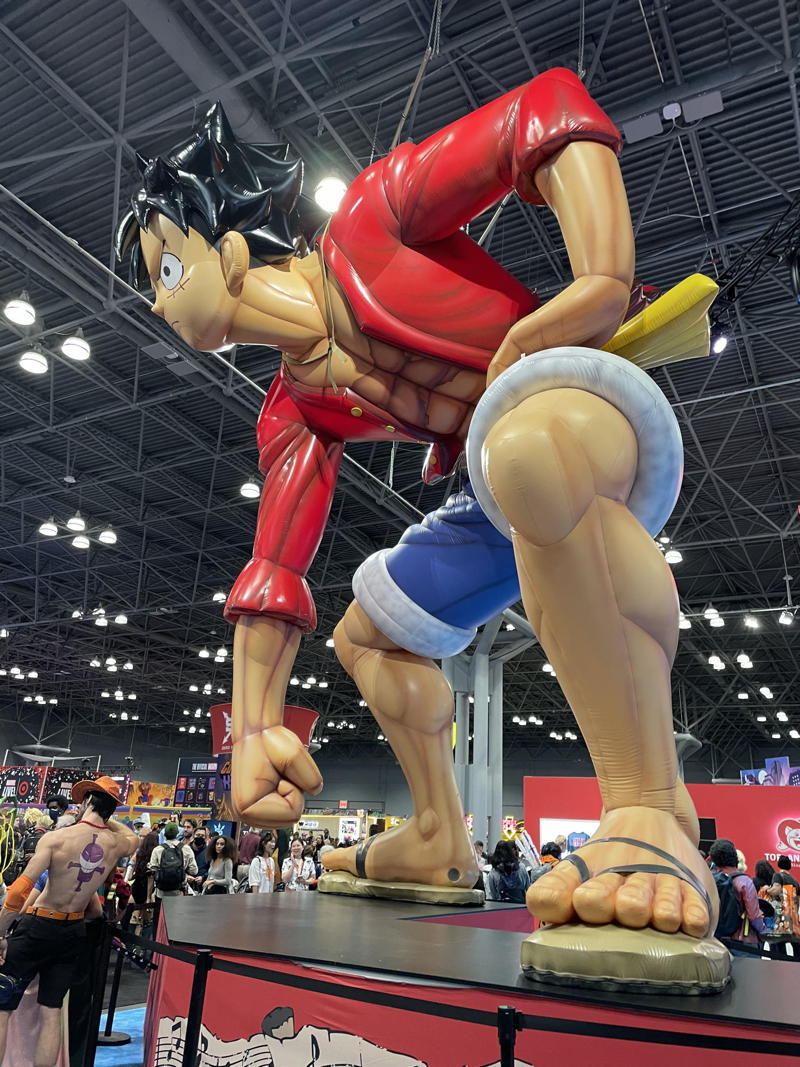
I kept telling people about this because, to be honest, it shook me. My eyes teared up when I saw it. I kept returning to bask underneath it and revel in its glory. A perfect combination of character design and dynamic expression, this balloon would have impressed even Jack Kirby, I think.
What moved me so is that Luffy, like all great comics, is the creation of one human, Eiichiro Oda. Yes yes, as one of the richest authors alive, he does have assistants who help him these days, but One Piece started out as most comics do, as one guy just drawing some lines on paper. He puts his comics on one panel at a time, just like the newbiest self-publisher in Artist Alley.
I couldn’t think of anything more inspiring, or more symbolic of the whole world of “comic con” than LUffy’s trimuph. Comics are an aspirational “industry” where the barrier to entry is low, and the monetary rewards are often pitiful. People stick around out of love and passion for the medium and the community. The reward is just being a part of this world, getting to say you belong, or maybe creating a character that people quote, stick to their refrigerators, dress up as, buy the toys of, make giant balloons of, or produce $200 million films for.
We all know that anime and manga soared during the pandemic but the exhibit halls of NYCC ‘22 were the in your face proof of that. I’ve often noted that NYCC attendees tend to be younger fans, and the exhibitor mix of video games and collectibles both reflects and creates that. But walking around it was so clear that younger fans were there mainly for anime. They were cosplaying as manga and video game characters. American comics cosplay was scarcer, and the Batmans and Harley Quinns tended to be adults.
American comics also boomed during the pandemic, just not in the same degree as manga. And it seems to be a somewhat parlous time for superhero media. WBD/DC is in a shambles; and even the mighty mighty MCU, driver of all culture for the last five years or so, has begun to stumble. The next MCU film, Wakanda Forever, is a big question mark due to the death of its main character. After that, the schedule is drifting for the first time, with a long planned Blade film on hold due to director and script problems, and other movies shifting release dates. Twitter rumors say Kevin Feige is stretched thin and let’s face it Thor Love and Thunder was closer to The Dark World than Ragnarok.
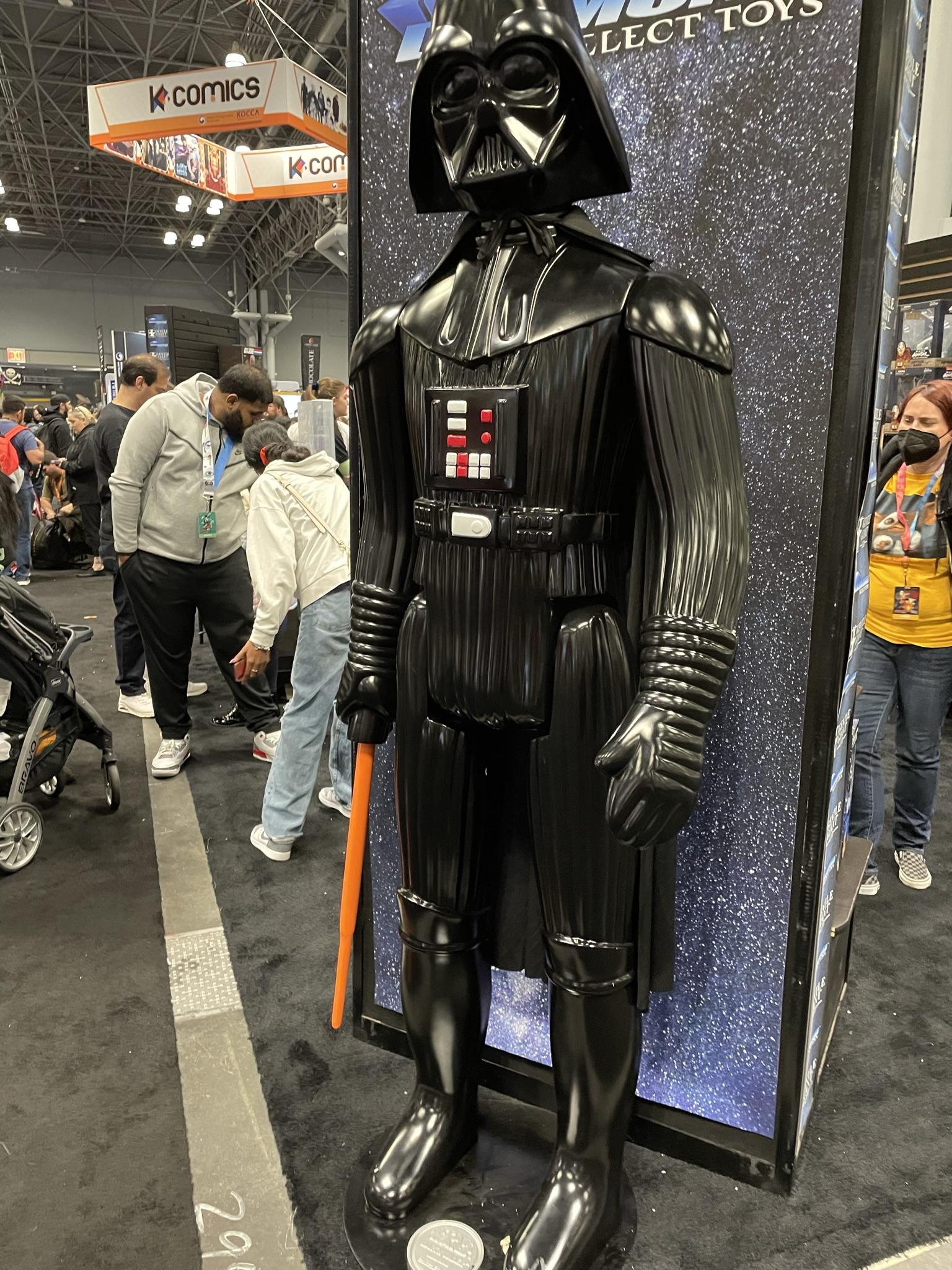
Let’s just be brutally frank: there was a giant Luffy balloon on the show floor. There was no giant Batman or Spider-Man. (There was a Darth Vader blowup at the Diamond booth but though it was a gallant attempt, it wasn’t a contender.)
If the NYCC show floor was a diagram of nerdworld, comics publishers were the equivalent of an abandoned storefront. I wrote about this in succinct form for my PW wrap-up, but in person it was just a shocker. Against these massive displays for anime and collectibles, comics publishers were often just a pipe and drape table with some people signing. That the signers might be the next Eiichiro Oda is the fuel that keeps the whole thing going, but the optics were still startling.
Even worse, as I wrote for PW, the boom in big booths crowding the center of the exhibit hall meant that smaller booths were scattered around more or less willy nilly and often in horrible locations.
Comic con exhibit floors usually include “neighborhoods.” San Diego’s “neighborhoods” are well established, for instance, with comics publishers located mostly in hall C, back issues (a shrinking category) in Hall B, art dealers and artist alley over in Hall G, toys and studios somewhere in the middle, and collectibles scattered all around.
To be blunt, NYCC”s comics neighborhood seems to have been uprooted by gentrification. Marvel had their usual carnival going on and although they have signings there, it’s always so crowded it’s not really a place to discover comics. IDW brought their new booth and I got a tour and it’s impressive. They’re the only top 10 publisher besides Marvel who showed up. Storm King, Scout (another up and comer with a big booth to show it) and Zenescope were more or less nearby but that was all I could find.
To be fair, most publishers swere there on the down low. Mad Cave, another up and comer, had a modest table set up. Z2 hosts major talent but has a philosophy of having a lowkey booth. As I noted for PW, Vault Comics, arguably one of Diamond’ Top Ten comics publishers, and certainly one of the top dozen publishers, had a small 10 x 10 booth that had a horrible location in the back of the hall, and was literally hidden by the crowds for the Go! Go! Curry booth. This is a “yum” for me (Go! Go! Curry is the Arby’s of Japan) but you still don’t want to have your comics signings blocked out by a row of kitchenware.
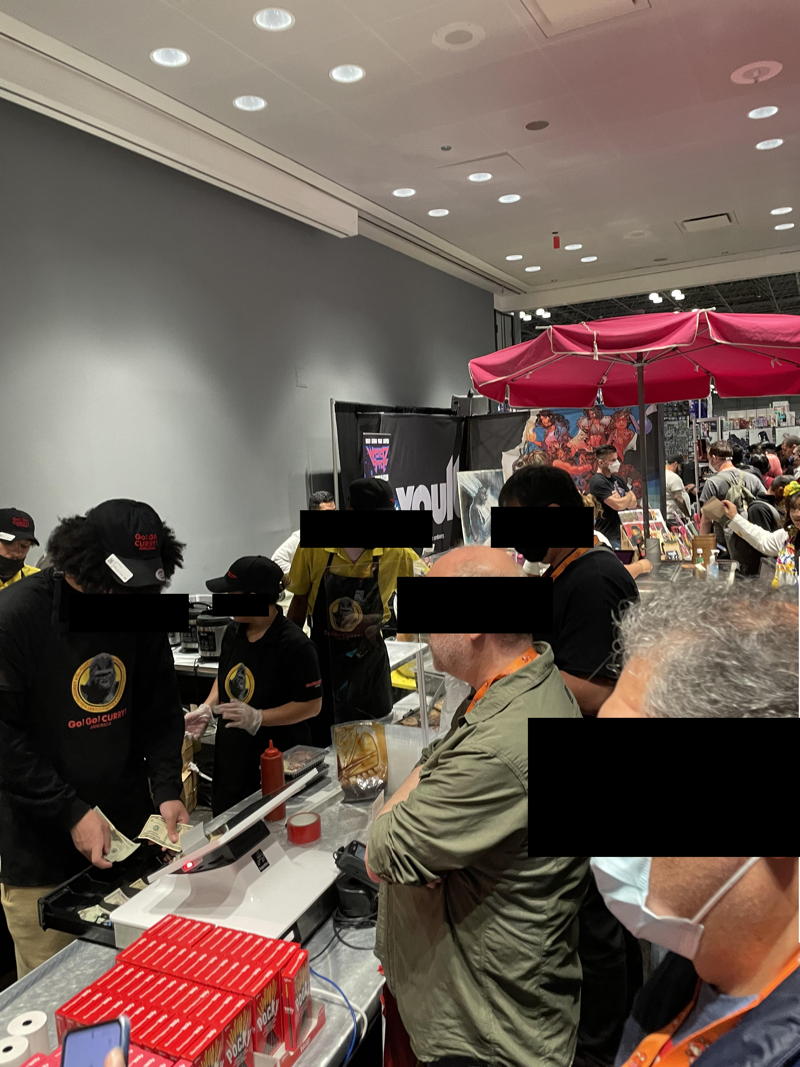
Elsewhere, there were mysteries – Sumerian Comics, a new hybrid of Behemoth Comics and Sumerian Records, had a large flea market type set up over yonder. (I didn’t get a chance to stop by and quiz the proprietors but their rough hewn signage and piles of merchandise deserved to be investigated.)
All this was in stark contrast to the central booth set ups that included a sleek, professional looking section for traditional book publishers like First Second, Abrams and PRH. These publishers are happy to be at comic cons to sell books and promote authors, and the rep at PRH even told me that she had been inspired by the Dark Horse booth at SDCC for this one stop shopping – a multi function area with all the brands under one roof and a steady stream of celebrity author signings.
Even more telling was the presence of aftermarket sales and collecting companies like WhatNot, CGC, The Comic Mint and the like – all had giant booths, and towering displays, often with vintage comics as the centerpiece.
.@TonyKhan can Danhausen have $750,000 ? pic.twitter.com/AkQoj4TUmc
— Danhausen (@DanhausenAD) October 9, 2022
It‘s a bad sign when the booths for companies that sell comics were expensive and expansive while the people who make the comics could barely be found.
The modest displays for comics publishers were somewhat offset by Artist Alley – equally modest in set-up but as vibrant as ever. Maybe no one wants to deal with the middle man. Get your slabbed comic at CGC, go straight to the creator in AA.
Even here though, the manga influence was felt. Peach Momoko, the manga-tinged variant cover artist, had the biggest lines at the show. And by all accounts, exhibitors were lining up as eagerly as fans to get “remarks” – little sketches on covers. (I need to do a whole essay here on remarks or remarques, as they are variously spelled, and the whole culture of that.) The line was so big that Momoko actually packed up and left after fights were breaking out. Graeme McMillan at Popverse has a harrowing account of what happened.
“Peach had her earphones on zoning out at that time, but suddenly I heard some violent yelling and that is when Peach heard it over her earphones as well. The security [guards] went over to calm the person down, and that is when I went over as well to talk to them, and to tell them that they are no longer welcome to Peach’s signing. Unfortunately by that time, Peach got overwhelmed and scared and started to blame herself for creating this problem because of her presence, she couldn’t breathe properly so had to hide herself under the table. She was also shocked to see people would fight and argue over a signature.”
Momoko has a policy of signing 10 items for free for fans – a seemingly kind and reasonable plan, but in these days of collectible mania it led to fist fights.
Manga’s biggest triumph, however, took place on Saturday night, when Toei animation bought out half the billboards in Times Square for a one house One Piece: Red takeover. Times Sq. is the one place that can match NYCC for crowds, and on this particular night it was a mix of NYC’s Mayor Eric Adams talking at a South Asain cultural event, dances and chanting, straw-hatted Luffy cosplayers and everywhere, ads for anime-related shows, including Crucnhyroo, Chainsaw Man, and an Instagram comics whose name I can’t remember that had a full on serial on a billboard.
The ads around the most famous square in America included Star Wars (Andor), Rings of Power and House of the Dragon and sports bras – lots and lots of sports bras and maybe watches, clothing…all the things you see at Times Sq. One thing was missing – superheroes. Nowhere to be seen. Except, as we were leaving, I spotted a small billboard for Black Adam, which would have its world premiere at that very spot a few days later.
Manga had won. It was a resounding victory, as they say.
None of this is to say that occidental comics are dead or dying. They’re stronger than ever – and with a stronger infrastructure than ever. Although the shift in distributors – from one to four – seems like a disruption, having four strong companies to handle moving comics around seems more nimble than having just one chose point, doesn’t it? When one of them – PRH – is the biggest book distributor in the world, it seems that more resources than ever are available. (Lunar’s Christina Merkler, on my Future of Comics panel Saturday, noted “I think that history will teach us that DC and the creation of Lunar and UCS at the time is what actually saved the direct market. Definitely the direct periodical market.”)
Perhaps, as NYCC shifts to a mix of Anime Expo and the defunct BEA, comics companies can take a page from the latter. Given the poor placement of small publisher booths, a solution would be for their distributor, Simon & Schuster, to get a bigger booth and rent out space to its clients. Everyone I mentioned this to thought it was a great idea, although there is one small problem – S&S is in the middle of being acquired by PRH, and even if that deal is stopped by the DOJ, S&S will still be acquired by someone. I suspect giant NYCC booths aren’t on their radar at the moment.
As for the future of comics…you can read reports on the business panels at NYCC at PW and ICv2. I recommend checking them out.
Deb Aoki on Manga at NYCC: Manga Wins New York Comic Con 2022
Brigid Alverson on kids comic: Kids and Comics at New York Comic Con 2022
Calvin Reid on the ICv2 conference: NYCC 2022: Comics Navigate Massive Growth, Supply Chain Disruptions
Brigid Alverson on ICv2: ICv2 Insider Talks: The Shifting Landscape of Direct Distribution
ICv2 Insider Talks: Kickstarter and the New World of Crowdfunding
WEBTOON Nearly $1B in Global Revenue
It’s worth noting that last one:
Webtoon VP of Content David Lee gave some rough numbers for the size of the business: WEBTOON, the company, had gross worldwide sales in 2021 of about $900 million, while sales for all the webtoon platforms (including Tapas, Tappytoon, etc.) reached well over $1 billion. As ICv2 columnist Rob Salkowitz, who was interviewing Lee, noted, that’s about half the estimated size of the North American comics market, which is $2 billion.
That is a lot of money. Serialization of comics going strong – it’s just going strong on the web in bite sized, scrolling chunks.
Saturday night at NYCC there was a party thrown by marvel honoring the late Mike Pasciullo. It was the return of a longtime NYCC tradition, and one of my favorite events on the con schedule, a free for all of cartoonists from around the world chatting in the cold NYC air. I went outside and caught up with a few pals but ended up in a long conversation with two foreign cartoonists I’d never met before – but we ended up talking about everything I wrote above as if we were best friends. Here were two aspiring Eiichiro Oda’s caught up in the US comics system, making a good living at it, but still itching to tell their own stories. And confounded by superhero comics inability to connect with young readers. At an earlier meal a different cartoonist was quite open about how lettering and coloring a work for hire comic made more money than his curator owned stuff, so he would keep juggling the two of them.
We were all happy to be at this place at this moment, surrounded by the return to form that NYCC 2022 represented – but also not quite sure what our place in that world is.
People stay in comics for the freedom and the community, not the money. That’s the best and worst part of the industry. The secondary market and the streaming wars are still strong, but as we head into a global recession we’re going to be playing the game on a brand new board. More changes, more shifts, more anxiety. But Luffy abides.


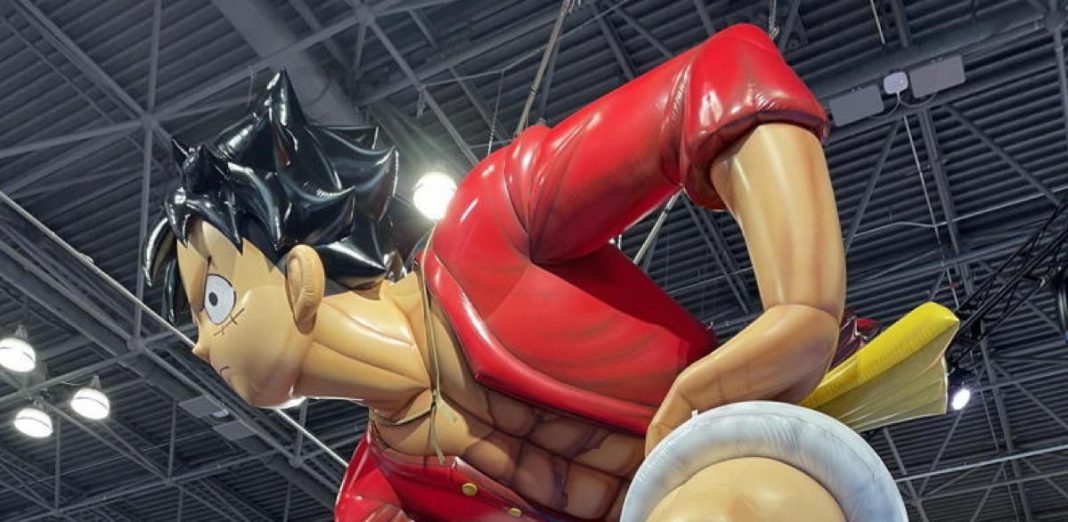
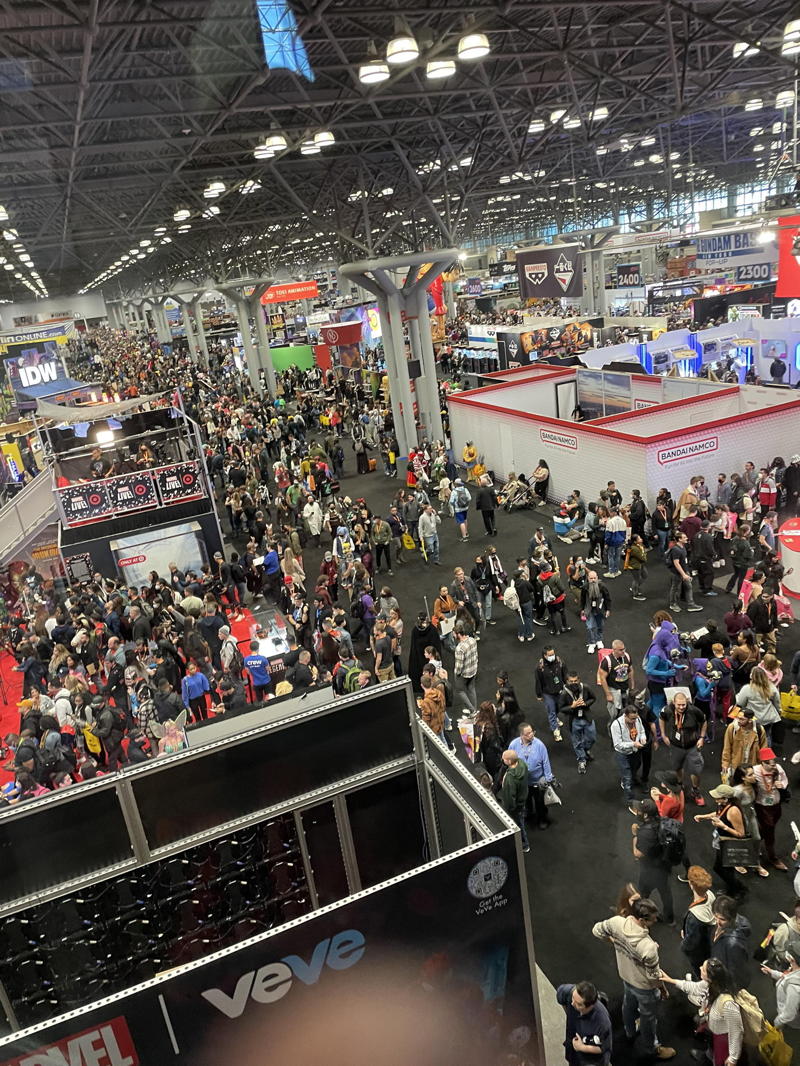
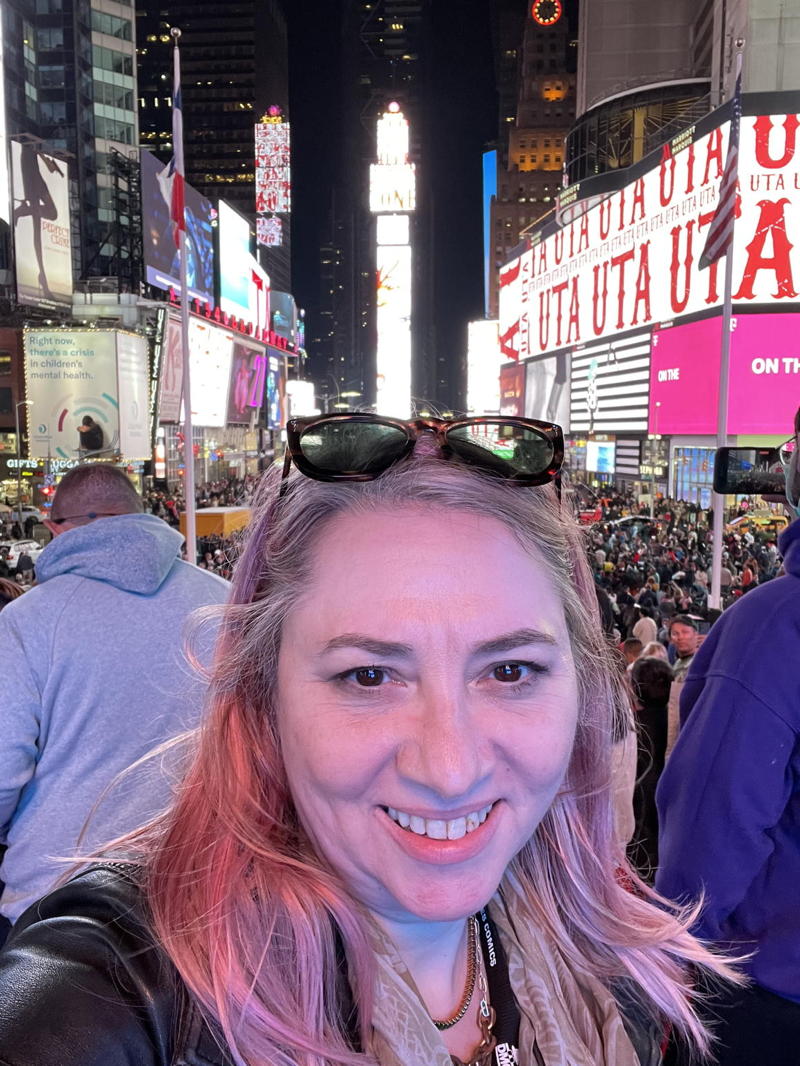
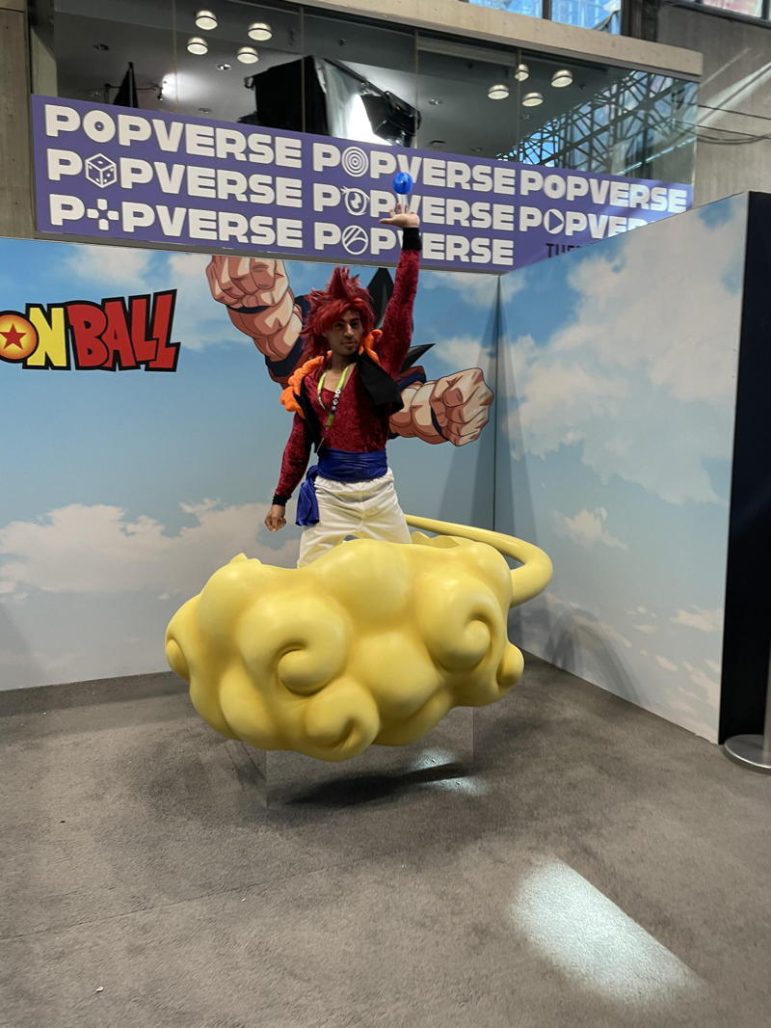
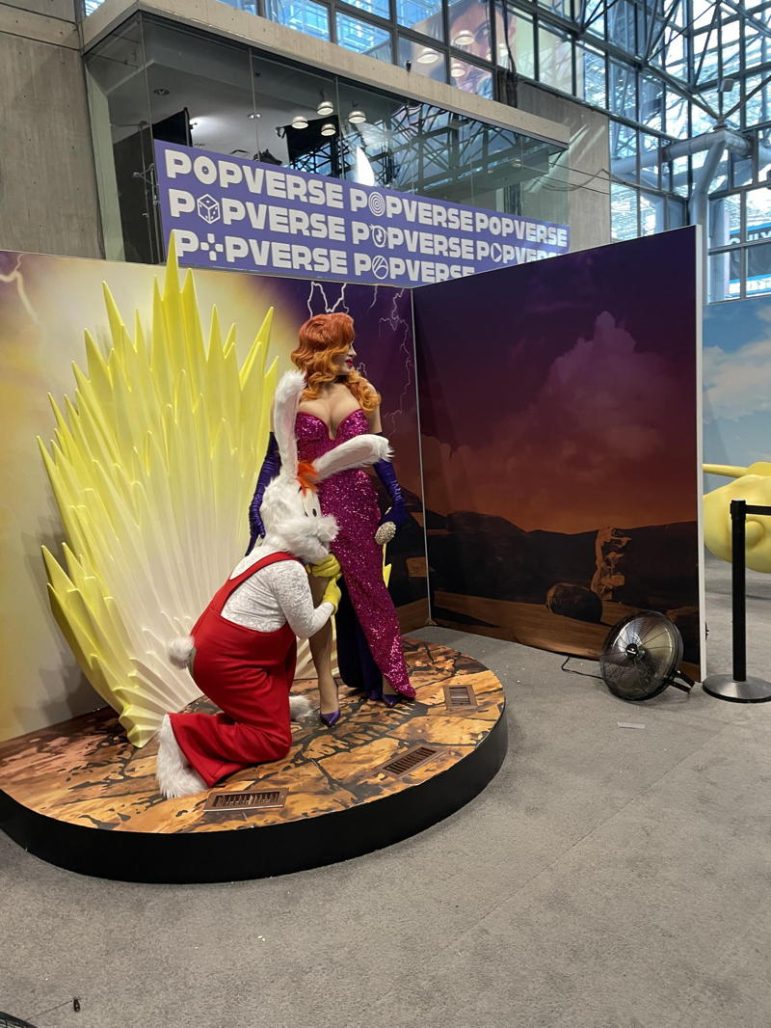




Great article, but it would be nice if you added an example with navigation.
Comments are closed.